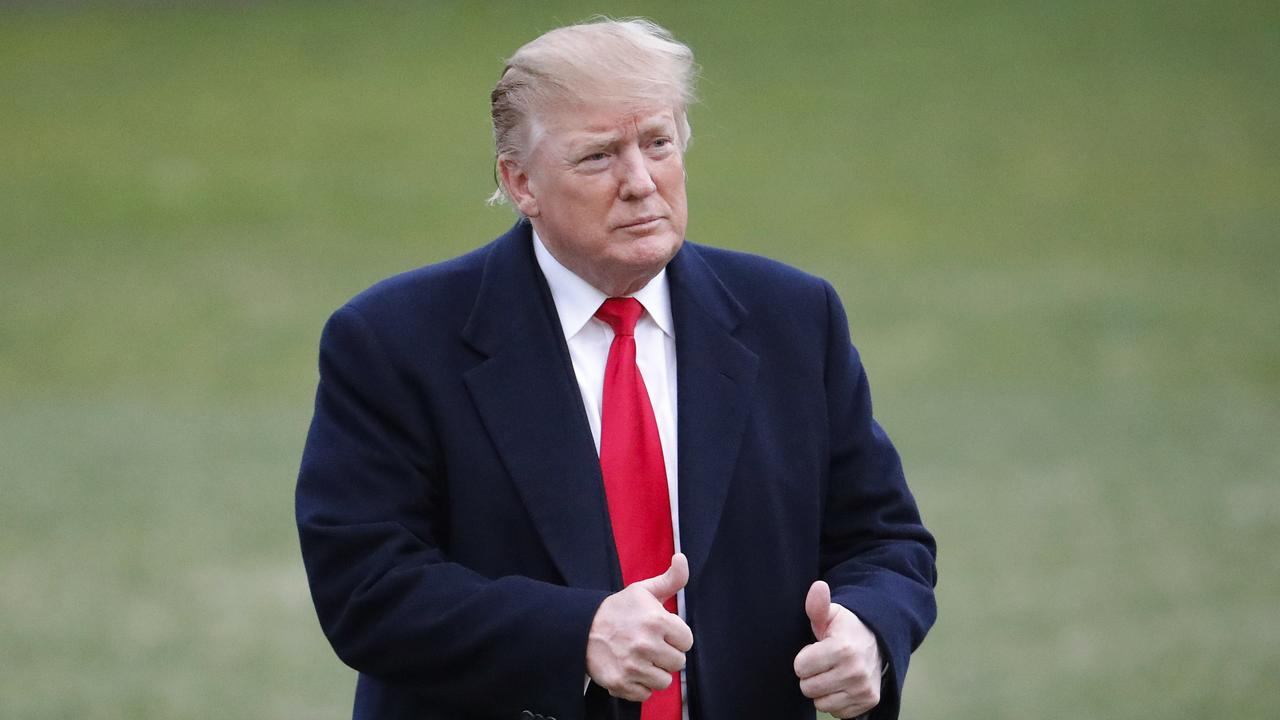
As The Australian reported last week, it’s valuable that authorities are making plans for the return of the children of Islamic State fighters. Those youngsters will be deeply traumatised and may be potential security risks. The few who make it back to Australia can expect to be of close interest to security authorities for years.
But no one should be fooled into thinking that we have arrived at an end-of-days moment for Islamic State. Any triumphalist mood is mistaken. There is a great deal of hard fighting to come to liberate Mosul in Iraq while no solution is in sight in Syria, as all parties to the conflict try to strengthen their fighting positions against the unlikely prospect of a truce.
A military offensive to surround Mosul in northern Iraq may begin as soon as next month. The US is reinforcing its troop numbers, recently deploying 560 troops at the Qayyarah air base 100km south of Mosul. Airstrikes have been stepped up in recent weeks and they have done substantial damage to Islamic State. Across two years there have been 9883 airstrikes as of last Tuesday.
The Pentagon claims more than 26,000 targets have been destroyed, including 150 tanks. In July, Time magazine reported that about 45,000 Islamic State fighters had been killed. That figure is improbably high because the group’s total strength was estimated to be about 30,000 earlier this year, though there is no doubt the group has sustained major losses.
Against such pressure it might be hoped that Islamic State was losing its effectiveness as a force. But in recent weeks the group has stepped up terror attacks in Baghdad and launched what it called a “battle of death” against Iraqi army units south of Qayyarah — a small action in which the Iraqis defeated their attackers. Most actions are terrorist-style operations involving vehicle bombs and suicide attackers. The group’s strategy is aimed at forcing the Iraqis to disperse security units around the country, thereby weakening their ability to attack Mosul.
We should expect Islamic State to respond with widespread terror attacks across Iraq when the ground offensive in Mosul starts. It will aim to lure the Iranian-backed Shia Popular Mobilisation groups into the fight, hoping that will create a Sunni backlash. The group presumably will be ready with more propaganda, and will urge supporters to take up the fight with random terror attacks around the world.
So much attention has been focused on the coming battle for Mosul that it plays into Islamic State’s millenarian ideology. Its propaganda will sell this as the defining moment to achieve martyrdom in defending the so-called caliphate.
We should expect a spate of international terror attacks as a result. Martyrdom is, however, for the brainwashed foot soldiers. The group’s leadership is sharp enough to have probably created escape options for themselves, and may well look to decamp to Raqqa in Syria, or farther afield, perhaps to eastern Libya or other areas where Islamic State has steadily built support.
Even if the leaders flee to fight another day, Mosul will present a difficult challenge for an attacking force. It’s thought that about 600,000 people are still in the city. They may be surrounded in a lengthy siege, in which case the civilian population will be made to suffer the most by its Islamic State captors. Or we may see an Iraqi attempt to push into Mosul involving tough building-by-building fighting, in a city riddled with roadside bombs, civilians used as human shields and Islamic State fighters dug in and prepared to die.
It’s questionable how long Iraq’s government and military can sustain a fight of that nature. Protests against the Haider al-Abadi government seem to be gaining strength in the south of the country, along with tribal violence. The US will feel pressured to support the Mosul offensive and President Barack Obama’s dilemma will be to judge when and how much to reinforce what will be his administration’s last military effort against Islamic State. No one in Canberra should be surprised if the White House comes calling late next month if there is a need to bolster the offensive.
The trend against Islamic State in Iraq is encouraging, although far from conclusive. But that moderately positive situation contrasts with the increasingly dire conflict in Syria. The events of last week show how confused and intractable the situation is.
Today Syria must be one of the most closely surveilled regions in the world. Satellite imagery, drones and a vast array of electronic sensors will be providing near real-time information to the Russians and separately to the US led coalition. Yet it was in this environment that a target that seems to have been a Syrian army unit, apparently watched for days, was mistakenly hit by coalition aircraft last weekend.
A Russian attack on a clearly marked humanitarian aid convoy is perhaps more easily explained because the Russians have shown not the least interest in avoiding civilian casualties, in a bombing campaign that has used non-precision gravity bombs, napalm-like white phosphorus weapons and illegal cluster munitions.
Islamic State’s position in Syria has deteriorated as a result of successful actions to close the Turkish border to foreign fighters looking to join the caliphate. But it remains in control of Raqqa and a swath of territory running from Aleppo in the northeast through to the Iraqi border in the southwest.
Elsewhere in Syria, the Russians have bought time and space for the Assad regime to keep control of the coast and parts of the border area with Lebanon. The Kurdish YPG militia is consolidating its hold on the border with Turkey. Much of the rest of the country is contested badlands controlled by extremist groups, many as unsavoury as Islamic State.
The ceasefire collapsed because the forces on the ground calculate they have more to gain from fighting than supporting peace at this stage of the conflict. Only the US-led coalition has a clear commitment to peace, but its position — limited to airstrikes and a handful of special forces working with the Kurds — is the one least able to shape the ground war.
Of course the losers from the appalling situation are the Syrian people. There are 4.8 million people in refugee camps in Turkey, Lebanon, Jordan, Egypt and Iraq, and 6.6 million internally displaced within Syria. It’s undeniable that these refugee camps are also a potential recruiting ground for Islamist extremists.
And what of the 110 Australians thought to be fighting with extremist groups in Iraq and Syria? Many of them are likely to die fighting in coming months, joining the several dozen already killed. That is the desired endpoint of their mission for many Islamic State fighters. Others may rethink their commitment and try to escape, and face being killed by their jihadist comrades.
It’s possible that a small number of Islamist extremists may find their way into refugee camps and an even smaller group could return to Australia.
At least in the short term, that is less likely to present a terrorist threat in Australia than the risk coming from people already here who are radicalising online and through social networks of like-minded individuals.
As the fight for Mosul gets under way, the most immediate concern for Australian authorities is likely to be the impact the battle has on individuals already on the pathway to radicalisation. The fight for Mosul may have echoes in Melbourne and Sydney, meaning that the prospect for so-called homegrown terror attacks remains significant.
Peter Jennings is executive director of the Australian Strategic Policy Institute.




To join the conversation, please log in. Don't have an account? Register
Join the conversation, you are commenting as Logout